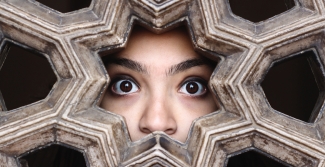Back-to-school eye care basics
As parents, we do everything we can to get our children off to a great start in school. But, while we’re busy stocking up on back-to-school supplies, many of us miss one key learning tool; our child’s vision.
Since 80% of learning occurs through the eyes, ensuring our child has good vision is crucial to classroom success.
How can poor vision affect learning in children?
Undiagnosed vision problems not only affect a child’s academic performance but they can also lead to social and behavioural issues.
Vision issues make it hard to focus on school work. Imagine that you’re struggling to read the small print in a book, or you can’t quite see the instructions on the whiteboard. You would lose focus pretty quickly, wouldn’t you?
An undetected vision problem can affect a child’s behaviour. If a vision problem continues to go undiagnosed, the child may become frustrated and start acting out.
Poor vision can mean poor hand-eye coordination. A child may shy away or be excluded from playing sports if an undetected vision problem affects their performance.
Reading requires comprehension, and comprehending often requires functioning visual skills. Our eyes work together to move across the page, make sense of words and understand what is written. Children with poor eye tracking often lose their place, skip lines and have a lack of fluency.

How can you protect your child’s eyesight?
By scheduling regular eye exams and taking the time to teach your children a few important eye health tips, you can reduce the risk of infections and visual impairments further down the line.
Get regular eye examinations
A comprehensive eye examination should be part of your back-to-school routine. Even if your child claims to have perfect vision, it’s recommended that children have a checkup at six months, again by age three and annually thereafter.
Eye examinations are critical to the early detection of problems like nearsightedness or farsightedness and conditions like amblyopia, which is the most common visual impairment among young children. If left uncorrected, it can lead to serious learning difficulties and vision problems. Many childhood eye conditions, such as lazy eye and squint, can be treated if they are detected early.
In most parts of the UK, a vision screening is carried out in schools at the age of five. While a school screening helps identify children with poor vision, it does not examine ocular health, nor does it detect focusing defects or other possible problems. For that reason, parents should also schedule a free NHS eye exam at their local opticians.
Watch for signals of eye problems
Unlike adults, children may not realise they have a vision problem; they may assume that everyone sees the world the way they do. Therefore, it’s up to parents to spot the signs of compromised eyesight.
Excessive eye rubbing, watery eyes, head tilting, covering one eye and holding reading material close to the eyes are all potential signs of vision problems. The same goes for frequent headaches and complaints of discomfort or fatigue.
Encourage children to wash their hands regularly
Classrooms and playgrounds are hotbeds for bacteria and dirt. As a result, large outbreaks of conjunctivitis, also known as “Pink Eye,” are often seen in daycares or schools. The only way to really prevent pink eye spreading is to practice good hygiene. Parents should encourage children to wash their hands often and tell them to avoid touching their eyes.
Wear protective eyewear when playing sport
Most eye injuries among kids occur while playing sports. The good news is, protective eyewear, such as safety goggles, helmets, face shields and eye guards, can significantly reduce the risk of serious eye injury. In the past, there was more resistance by children to wear protective eyewear due to concerns about how it might make them look. Today, it’s more widely accepted thanks to sports eyewear being worn by professional athletes, from tennis players to cricketers. Parents play an important role in making sure their children gear up for the game.
Limit your child's screen time
It’s not only adults who spend long days plugged in. With an ever-increasing amount of technology in schools, children are constantly connected, too. In fact, as children return to school, their screen time can often double. Over time, prolonged exposure to digital devices can cause eye strain, fatigue, and other vision problems.
Limiting children’s use of technology can be challenging, yet restricting recreational screen time to two hours or less a day can help avoid these symptoms. Parents can help reduce the risk of eye strain by teaching their children to practice the “20-20-20” rule. Every 20 minutes, look away from the screen for 20 seconds and focus on something at least 20 feet away.








